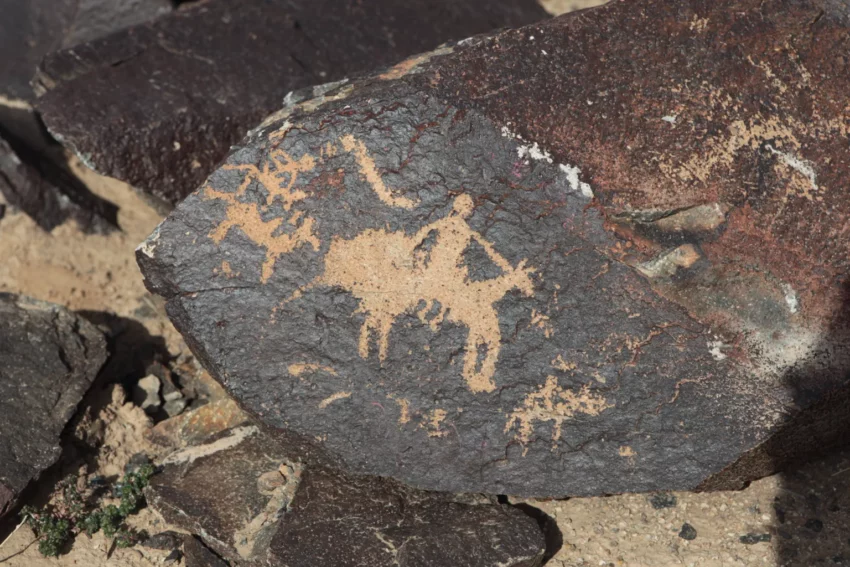Get your dose of History via Email
The Yinshan Rock Paintings: An Overview
The Yinshan rock paintings, a significant archeological treasure located in the Yin mountains of Inner Mongolia, bear witness to an ancient culture that once thrived in the region. These petroglyphs adorn the surfaces of granite in a cluster of sites, revealing a diverse array of images that include animals, figures, and symbols representative of the creators’ worldview and spiritual beliefs. As testaments to the expressive capabilities of prehistoric human societies, the Yinshan rock paintings provide scholars with valuable insights into the life and thoughts of people living thousands of years ago.
Characteristics and Composition of the Paintings
Unique in form and presentation, the Yinshan rock paintings include a variety of motifs depicting animals such as sheep, horses, and camels, as well as human figures engaged in activities like hunting or dancing. Some of these paintings feature elongated limbs or exaggerated physical features, illustrating a distinctive artistic convention that serves to emphasize certain qualities of the subjects depicted. These stylistic details not only add vitality to the images but also function as keys to understanding the social and spiritual influences of the time.
Chronological Context of the Paintings
While unequivocally ancient, pinpointing the exact age of the Yinshan rock paintings remains a challenge. Estimates, largely based on stylistic comparison and regional historical contexts, place the artwork in an era ranging from the Paleolithic to the historical period—broadly spanning from 10,000 BC to 200 AD. What remains clear is that these petroglyphs capture a broad spectrum of time, potentially offering glimpses into transitions from hunting and gathering societies to those involving early agriculture and animal domestication.
Spatial Distribution and Sites
The Yinshan rock paintings are not confined to a single location; rather, they are distributed across a series of sites south of the Yin mountains. Each site presents its own assemblage of rock paintings, united by a common thread of expressive intent and thematic content yet individually manifesting unique elements of this ancient art form. The sites included within this distribution are Bayan Gobi, Bainuogehu, Wudangzhao, Shangdu, and Qingshuihe. These locales collectively house the vast canvas upon which prehistoric peoples left their indelible mark.
Research and Preservation Challenges
Studying the Yinshan rock paintings is not without its hurdles. Over time, the elements have not been kind to these ancient artworks. Environmental factors, such as water and wind erosion, pose ongoing threats to their preservation. Moreover, the rise of tourism and the inherent curiosity of the modern world place additional pressures on these vulnerable artifacts. Balancing the preservation of these sites with the pursuit of knowledge and the public’s desire to witness history first-hand is a task that requires careful strategy and delicate implementation.
Interpretational Efforts and Significance
Interpreting the Yinshan rock paintings goes well beyond mere surface-level observation. Scholars and archaeologists continue to delve into these images to unravel the cultural, spiritual, and societal values of the people who created them. Such efforts are vital for a comprehensive understanding of the human past and contribute significantly to our collective knowledge about the evolution of artistic expression and religious thought. As symbols of human ingenuity and creativity, the Yinshan rock paintings stand as enduring monuments to the intangible heritage of humanity, offering us a fleeting glimpse into a world long vanished.
Conclusion
It is through sites like the Yinshan rock paintings that we perceive the enduring desire of humans to express and communicate across the ages. These manifestations of prehistoric art hold a key to unlocking mysteries of civilizations long disappeared but whose echoes still resound in the cultural landscapes of the present. It is the task of the academic community to continue the pursuit of knowledge surrounding such precious remnants of human history, ensuring their protection and accessibility for future generations.
Sources:

